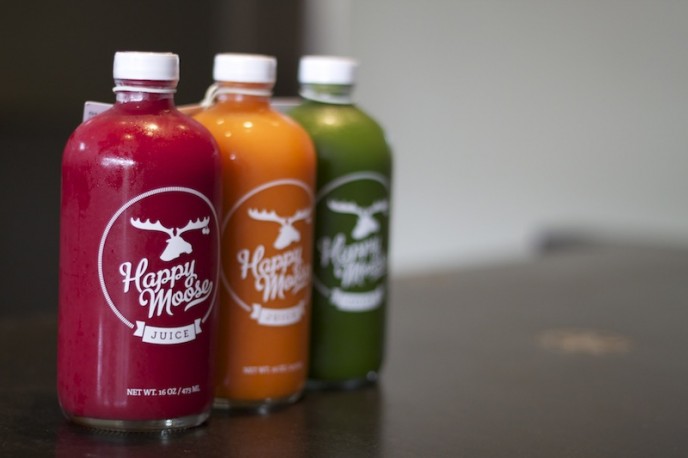San Francisco has long been the startup hub of the US, and even though other regions have made a valiant effort, you just can’t separate “startup†from Silicon Valley. But, forget about getting on the startup bandwagon—get on the startup bus!
In San Francisco, Leap buses have a Leap app, which lets riders purchase snacks on the go. Leap CEO Kyle Kirchhoff uses it to purchase Happy Moose Juice which (unsurprisingly) is a San Francisco startup’s product. In fact, that’s the only thing on the Leap menu: Snacks and goodies from startups. You don’t have to be an entrepreneur or work for a startup in order to take a Leap, but there’s a good chance you’ll be sitting next to one.

Leap scored $2.5 million in venture capital and today you can take a one-way trip for six dollars. Compare that to MUNI, which is a $2.25 one way ticket, and you might be wondering why the startup bus is succeeding. There are five buses in the fleet, which are actually old transit buses completely remodeled to feature free Wi-Fi, USB ports, and bar stools. Reclaimed wood provides the finishing touches, and riders get the vibe that they’re sitting in a high tech company’s break room.
Commuting Done Better
Leap got beta tested in 2013, but it took two years to get the official launch off the ground. Right now, the route is 25 minutes long and goes from the Financial District to the Marina. However, Leap is only on the road during rush hour in order to cater to the startup crowd. You can see where the next Leap bus is on the app as well as check out how many available seats there are. There are no stops via the reverse commute in order to make better time.
It’s clear that people are willing to pay for a better experience, even if it comes at a price tag almost three times the cost of MUNI. Major investors like billionaire Marc Benioff are backing Leap along with Tim Draper and Andreessen Horowitz. Investors are interested in such startups because they see privatization as a means of filling disparities rampant in public transit. MUNI might be cheap(er), but it’s slow, crowded, and not reliable. In a city like San Francisco where commuting is a way of life, it can be done better.
A “Leap†of Faith
According to Kirchhoff, the Marina stop point is just the start of Leap. There are many other possible routes on the agenda. However, the Marina was selected first “mainly because there’s a high concentration of people who work downtown and a high concentration of smartphone users.†Like any good entrepreneur, he had a solution to a problem and then found the densest population of his target audience. It was an easy way to get customers who couldn’t find space on MUNI.
However, what’s really impressive about Leap is that it epitomizes the importance of startup culture. It serves startup workers and supports complementary startups like food and beverage companies by offering their products. That’s what really makes the startup world go round—by “leaps†and bounds.
